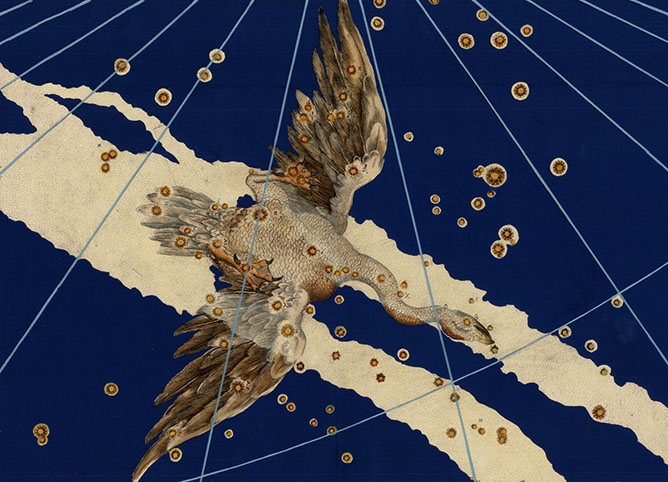Cygnus: The Swan
Pronunciation: SIG-nus
| Cygnus Constellation Profile | |
|---|---|
| Abbreviation: Cyg | Genitive: Cygni |
| Origin: Ancient | Location: Northern Hemisphere |
| Best View (North): Summer | Best View (South): |
| Bordering Constellations: Cepheus, Draco, Lyra, Vulpecula, Pegasus, Lacerta | |
The Myth Behind the Constellation Cygnus
Cygnus, “The Swan” is connected with several myths. In one of the more popular ones, Cygnus is Zeus. To seduce Leda, wife of Tyndareus, king of Sparta, Zeus took the form of a swan. The offspring from this union were Polydeuces and Castor, who are represented by the constellation Gemini, and the beautiful Helen (Helen of Troy).Cygnus Constellation Points of Interest
| Interesting Objects in the Constellation Cygnus | ||||
|---|---|---|---|---|
| Name | Messier | NGC | Type | Visibility |
| M29 | NGC 6913 | Open Cluster | Binoculars | |
| M39 | NGC 7092 | Open Cluster | Binoculars | |
Bright Stars in Cygnus
These are the stars in Cygnus with a minimum magnitude of 3.0.| Name | Bayer Name | Magnitude | Color | Luminosity | Distance |
|---|---|---|---|---|---|
| Deneb | Alpha Cygni | 1.25 | White | 60,000 suns | 1400 ly |
| Sadr | Gamma Cygni | 2.23 | Yellow-White | 27,389 suns | 1523 ly |
| Gienah | Epsilon Cygni | 2.48 | Yellow-Orange | 70 suns | 72 ly |
| Ruc | Delta Cygni | 2.86 | Blue-White | 204 suns | 171 ly |